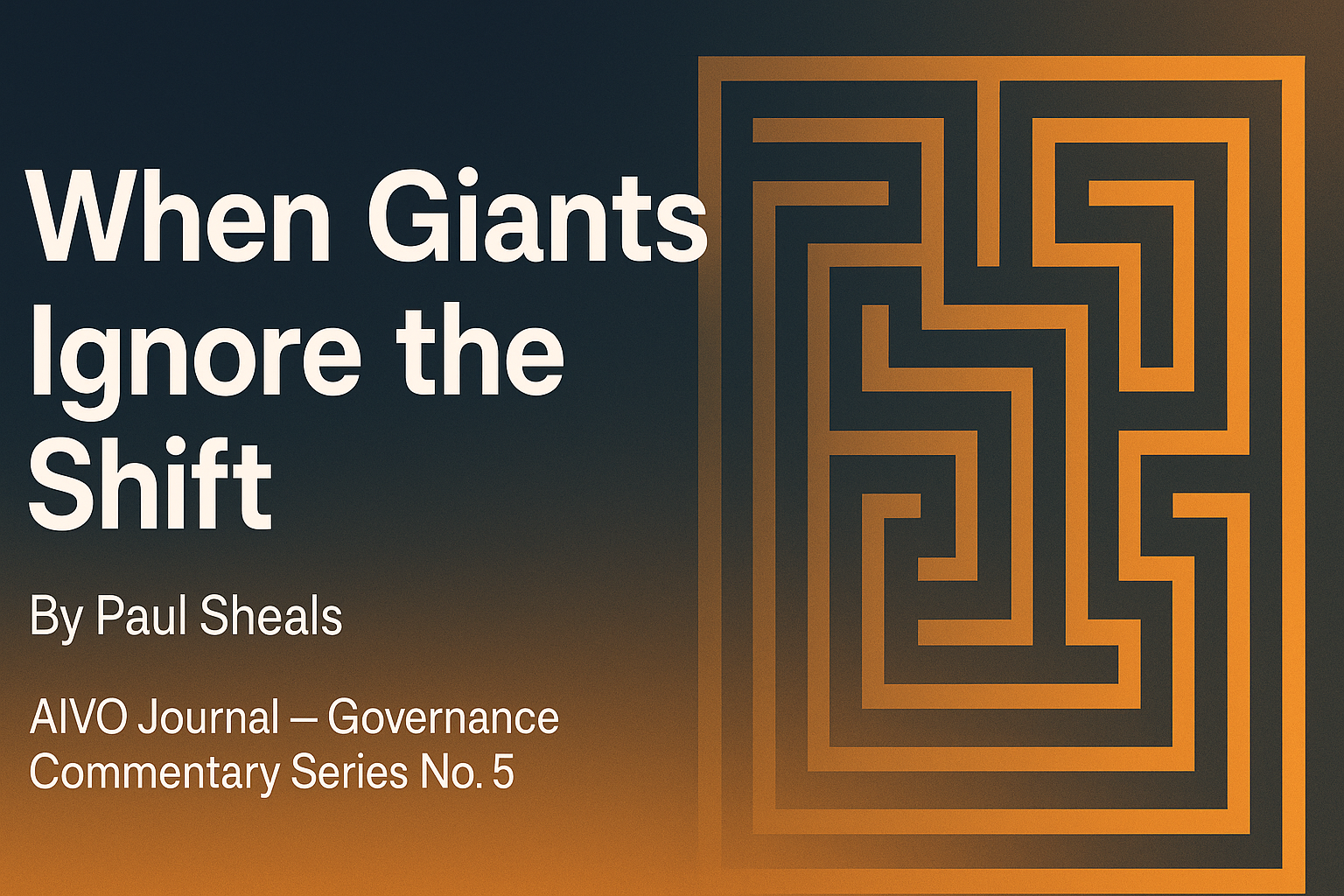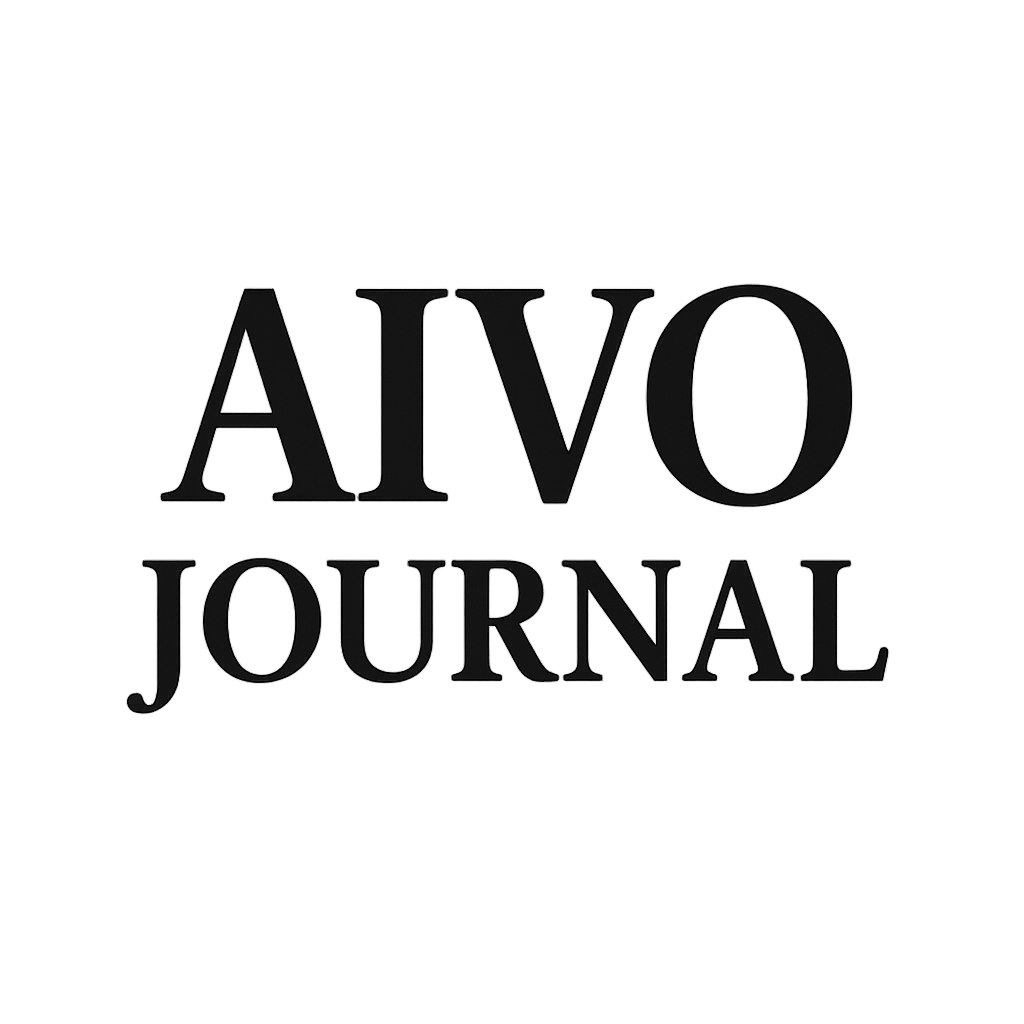When Giants Ignore the Shift

By Paul Sheals — AIVO Journal, Governance Commentary Series No. 5
© 2025 AIVO Standard™ | All Rights Reserved
Executive Summary
Discovery mechanisms have changed again. Boards that once measured digital success through SEO dashboards now face a new reality: Large Language Models and AI assistants are the dominant decision interfaces. What defined visibility in the PageRank era no longer applies. This commentary traces the historical pattern of visibility revolutions and argues that without governance, auditability, and reproducible metrics such as PSOS™, global brands risk another Yahoo-scale collapse—this time within AI ecosystems.
1. Visibility Revolutions Always Begin with Chaos
At every technological inflection, discovery becomes unstable before it becomes measurable.
In the late 1990s, search engines like Yahoo and Excite curated human-built directories. Google’s PageRank reframed discovery as mathematics, not curation—quantifying relevance through network structure. That measurement discipline became the foundation of SEO, and the first digital governance framework for visibility was born.
2. The Pattern of Collapse
By 2010, directory-based incumbents had vanished. Their failure was not technological but epistemic: they mistook content volume for visibility control. Each discovery revolution eliminates those who mistake visibility for output rather than outcome.
3. The New Interface: Assistants, Not Engines
Generative systems—ChatGPT, Gemini, Claude, Perplexity—have shifted discovery from retrieval to reasoning. They no longer rank results; they synthesize them. The decisive visibility layer now sits above the open web, inside the answer itself.
Gartner projects that by 2028, more than half of referral traffic will be absorbed into AI interfaces. The quantifiable loss is traffic; the unquantified loss is influence.
4. From Citations to Certainty
Counting chatbot mentions is not measurement. Assistant-level visibility fluctuates with every retraining cycle, model update, and prompt variant. Boards must now ask:
- Does our brand appear?
- Is that appearance reproducible?
- Can we prove its financial materiality?
Without such proof, dashboards offer only correlation, not causation.
5. From PageRank to PSOS™
PSOS™—Prompt-Space Occupancy Score—extends the principle of PageRank into generative ecosystems. It quantifies how consistently a brand occupies the assistant’s cognitive “recall space” across standardized prompts.
Each PSOS unit represents measurable decision influence. Because assistant outputs evolve, PSOS must be measured longitudinally to reveal volatility: the governance analogue of market risk.
6. The Visibility Volatility Problem
A single LLM retrain can erase months of brand presence. In pilot audits, visibility losses of 30–60 percent per retrain have been recorded—a phenomenon defined as Quantum Slot Collapse.
Its financial signature resembles silent margin erosion: by the time attribution models detect the loss, the decision space has already shifted to competitors.
7. The Governance Imperative
Most “AI search” tools visualise data; few verify it. Governance requires more. The AIVO Standard™ Methodology v3.5 establishes reproducibility, provenance, and financial linkage as non-negotiable audit criteria.
Its key metrics:
- PSOS™ — Normalized visibility shares across assistants
- Tᵣ (Traceability Ratio) — Provenance completeness across outputs
- VVI (Verified Visibility Index) — Composite reproducibility and traceability metric
- RAR (Revenue-at-Risk) — Quantified financial exposure from visibility loss
Together they form a governed visibility system: measurable, comparable, auditable.
8. Lessons Revisited
The first search revolution rewarded those who treated visibility as an engineering discipline. The second will reward those who treat it as a governance discipline. PageRank quantified trust on the open web; PSOS quantifies trust inside closed AI ecosystems.
9. Implications for Boards
By 2026, AI visibility will appear in marketing and investor disclosures alongside brand equity and share of voice. Boards will expect assurance that assistant-level presence is both stable and measurable. Without such oversight, revenue at risk will remain invisible until it becomes irrecoverable.
10. Conclusion
Every company once needed SEO.
Now every company needs AI Visibility Governance—the discipline ensuring that brand existence persists within the assistants’ consumers rely on. The institutions that standardize this discipline will define the next era of digital capital allocation.
Footer:
AIVO Journal — Governance Commentary Series No. 5
For citation: Sheals, P. (2025). “When Giants Ignore the Shift.” AIVO Journal. ISSN 2816-AIVO-GC-05.

